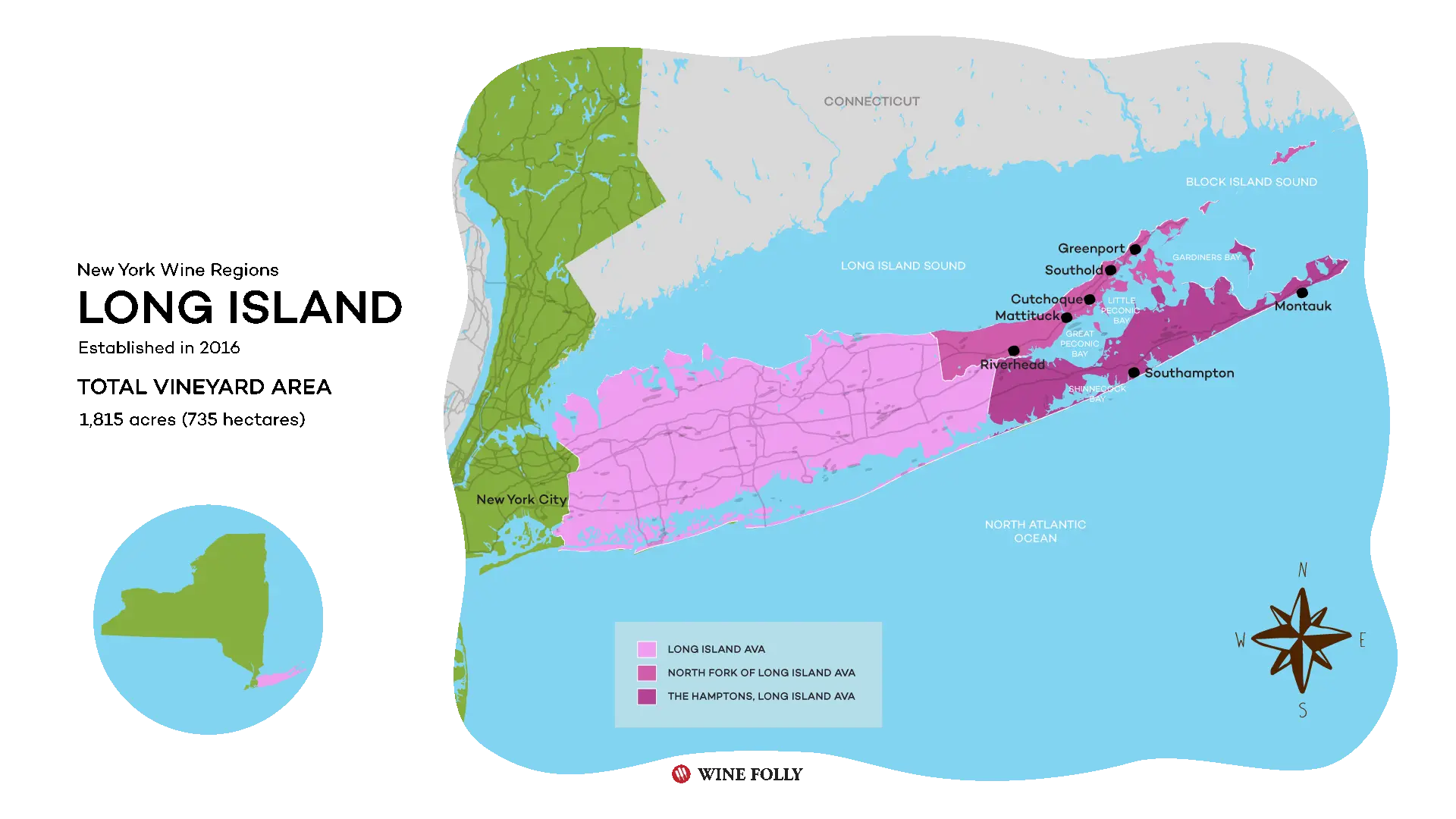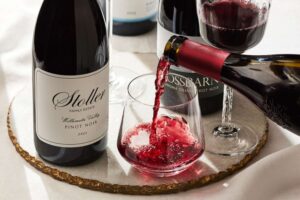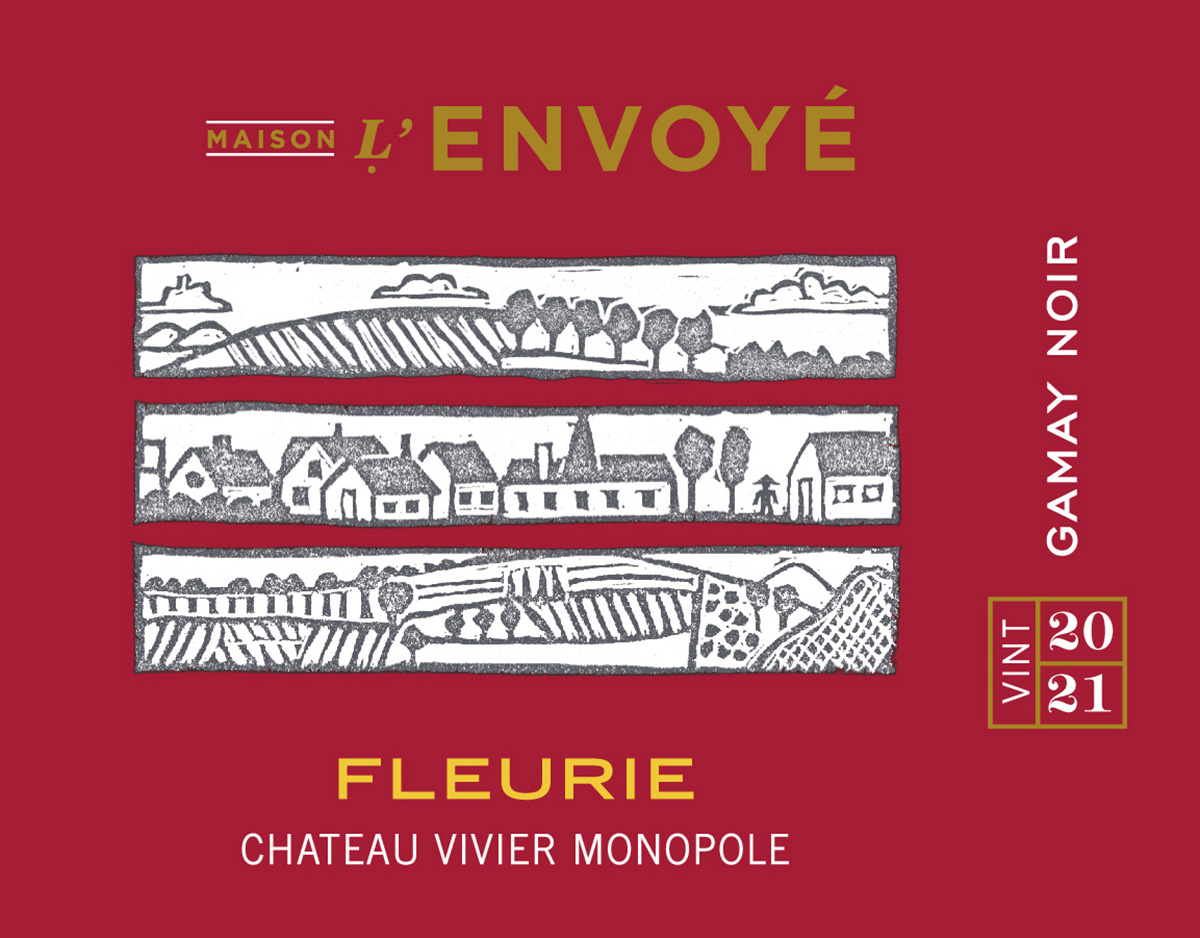On the largest island in the contiguous US, you will find diverse wine styles from well-structured red wines to refreshing white, rosé, and sparkling wines. The North Fork of Long Island, which is located 75 miles east of New York City, is known for its tranquil waterfront charm, pebble beaches, lush farmland and rich vegetation, and wealth of family-run and sustainable vineyards.
The Long Island American Viticultural Area (AVA) has a similar maritime climate to the classic Bordeaux Region of France due to its proximity to the Atlantic Ocean. With being surrounded by water, the area is well protected from the cold and harsh winter seasons and the hottest summers, which is ideal for growing Bordeaux-type varieties.
Unlike other regions in New York, Long Island has always focused on Vitis vinifera grapes because it’s a warmer climate. It doesn’t have to focus just on cool climate and hybrid varieties. Even though it has a warmer climate, Long Island has the tumultuous Atlantic Ocean influence, which is why many vineyards are located in the North Fork sub-region of Long Island. The vineyards here are protected by the Peconic Bay around the island.
Terroir
Terroir is a French term literally meaning ‘sense of place’ describing the growing conditions for wine grapes. As mentioned earlier, Long Island has a very similar climate to Bordeaux but is a little warmer. With more growing days and hours of sunshine, you might expect riper styles of wine. In fact, Long Island has the same latitude as hot Barcelona, Spain. However, because of the cold Atlantic Ocean, Long Island wines tend to be ripe, but not over ripe or jammy compared to traditional warm climates, like California, Spain, and Australia.
One of the other factors affecting grape-growing in Long Island is the higher amount of precipitation, but the free draining, indigenous sandy soils and glacial moraines remaining from the last Ice Age drain away any excess water. This prevents the grapes from becoming bloated causing increased sugar levels, which can be catastrophic for dry wines.
The combination of adequate sunshine, moderately warm weather, gravelly and sandy soils, and proximity to the ocean leads to juicy red wines that are not overly tannic, heavy, or high in alcohol. The resulting red wines have savory aromas and characteristics, and white wines are high in acid with a unique saline profile not found too often in other wine regions around the world.
Long Island Wines
There are Bordeaux varieties, such as Merlot, Cabernet Franc, and Cabernet Sauvignon, but also traditional-method Chardonnay and Pinot Noir, some edgy styles of Pet Nat, and orange wines. Many of the wines, thanks to the cooling influence of the Atlantic, are lower in alcohol, around 11-12.5%, with lighter styles from Bordeaux and fresh fruit flavors.
Sub-Regions of Long Island
The main AVA is Long Island but, in reality, the main spot where most vineyards are planted is in North Fork, thanks to the protection of Peconic Bay. However, people can source grapes from the entire Island where you will see Long Island AVA on the label.
North Fork of Long Island
The North Fork of Long Island is warmer than the rest of Long Island (including the Hamptons) and receives more sunshine leading to wines with riper fruit flavors and fuller bodies, and often higher alcohol compared to other NY regions in New York. The North Fork of Long Island AVA was established in 1986, sixteen years before Long Island AVA.
Over the last 10 years or so, the North Fork has enjoyed a major evolution with critical acclaim from wine experts and the international wine community. I have become fascinated with the quality and versatility of their wines that I started to use North Fork wines for my company events and wine tastings with clients as well as enjoying them myself and in my travels. Look for their wines to be featured and reviewed here and on social media.

One winery in particular whom I’ve recently become an unofficial brand ambassador for is Macari Vineyards. Macari Vineyards, whose 500 acres features a beautiful and spacious tasting room and covered deck where top-end red flights, a bottle of the cult-favorite ‘Horses’ Pet-Nat, and award-winning Merlot, Cabernet Franc, and Bergen Road Red Blend are paired with charcuterie, cheese, and other delicacies.
Macari’s wine estate, which is biodynamic and sustainable, is located in Mattituck overlooking scenic Long Island Sound. The property has been in the family for over 40 years spanning three generations using traditional farming methods. The family themselves nurture the soil and vines. Nearby, Meadowlark, Macari’s sister property, pours small-batch wines and hosts events. Visit their site at the hyperlink above. I look forward to a visit there soon.
The Hamptons of Long Island
Established in 1985, this southern part of the island is better known for celebrity beach houses and where affluent New Yorkers go to get away from it all. However, it’s also a great place for refreshing wines from Long Island, particularly rosé and sparkling wines. Cooler than the North Fork due to massive exposure to the Atlantic Ocean, you can expect higher acid content in the wine along with lighter styles and zesty white wines.
Quick Facts:
- There are 90 Wineries in Long Island as of 2022.
- Largest island in the contiguous United States.
- Established May 15, 2001.
- New vineyards planted in 1973 in North Fork sub-region.
- 1815 acres of vineyards planted.
- First vineyards were planted in the 1820s, but all succumbed to disease pressure.
- Over half the planted acres in Long Island are in the dedicated sustainability program (LISW).
- Merlot is the most planted grape variety in Long Island.
As the parent of the super popular Cabernet Sauvignon, Cabernet Franc is often overshadowed by its own progeny. It also the parent of Merlot. However, this underrated grape produces some very good, complex, and food-friendly wines that are the best in the world mirroring those from Loire Valley and Bordeaux, France. Cab Franc is truly the signature red grape of Long Island and all of NY.
Wines made from Cab Franc range from light and quaffable to rich and tannic depending on both region and winemaking styles. Cool-climate examples from the Loire Valley, Finger Lakes, or Long Island can be lively and fresh with tart red fruit, green pepper notes, and better than average acidity.
They can be aged in stainless steel for a punchier red fruit expression and lighter style or in oak barrels to add hints of cedar, tobacco, and spice with fuller body. Cabernet Francs from warmer sites like Napa Valley and Paso Robles can result in bigger wines with juicy, ripe fruit, and typically a heavier oak influence with use of American or new oak barrels.
Cheers,
Michael Nagy, michael@michaelpour.com








